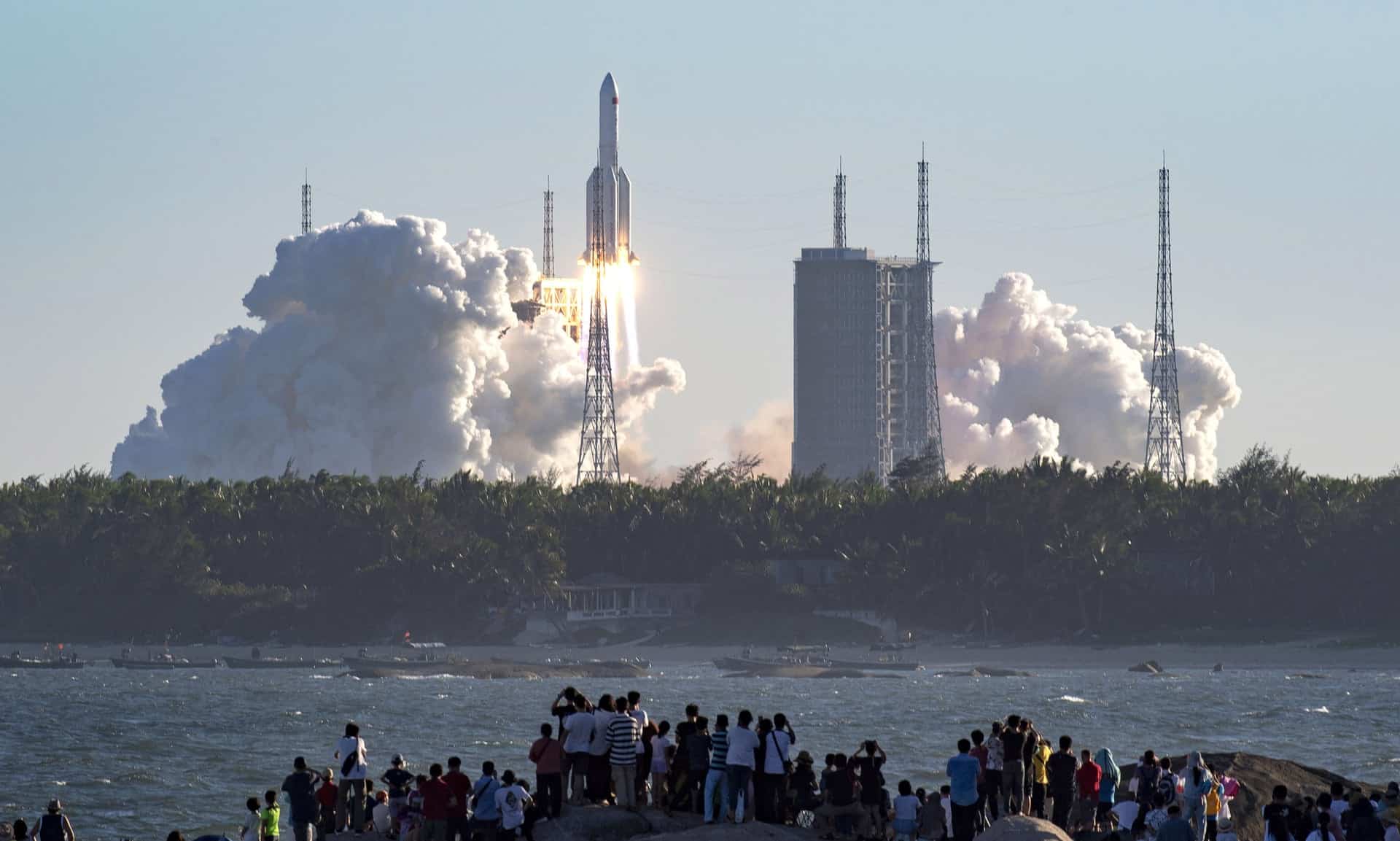China has successfully launched a new rocket and prototype spacecraft, according to state media, in a major test of its ambitions to operate a permanent space station and send astronauts to the Moon.
A Long March 5B rocket took off from the Wenchang launch site on the southern island of Hainan and eight minutes later an unmanned prototype spacecraft successfully separated and entered its planned orbit, Xinhua reported. A test version of a cargo return capsule also successfully separated from the rocket, Xinhua said.
China hopes that the craft will one day transport astronauts to a space station that it plans to complete by 2022 – and eventually to the Moon. It will have capacity for a crew of six.
The spacecraft and capsule were slated to return to a landing site by Friday after completing their test flights, said Ji Qiming of China’s manned space agency.
The United States is so far the only country to have sent humans to the Moon. But in its effort to catch up China has sent astronauts into space, satellites into orbit and a rover to the far side of the Moon in 2019.
The successful maiden flight of the 54-metre Long March 5B – which has a takeoff mass of about 849 tonnes – should reassure China, following failures of the 7A model in March and 3B model in April. Beijing has launched several spacecraft since 1999 and its previous vessel, the Shenzhou, was modelled after Russia’s Soyuz.
Assembly of the Tiangong space station, whose name means Heavenly Palace, is expected to begin this year and finish in 2022. It will have three modules, with living and working quarters and two annexes for scientific experiments.
China plans to send an astronaut to the Moon in about a decade and then build a base there. Its lunar rover on the far side has driven about 450 metres so far.
The next big mission for Beijing is to land a probe on Mars, with liftoff expected this year.

